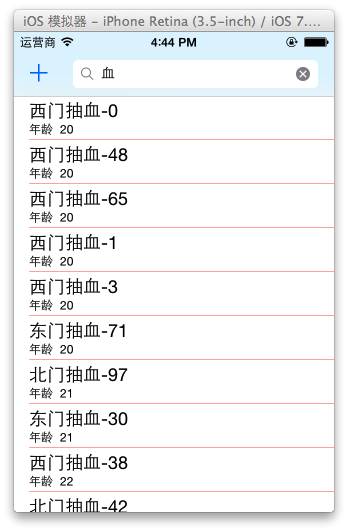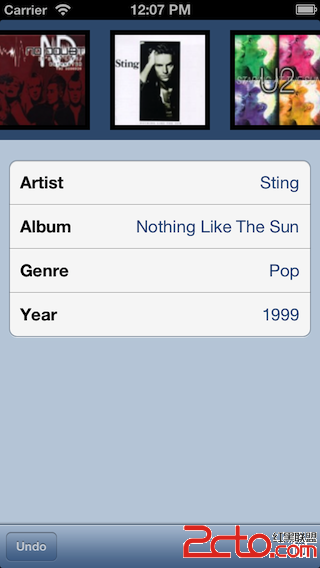iOS App中數據治理框架Core Data的根本數據操作教程
NSEntityDescription是實體描寫對象,它可以類好比數據庫中的表,NSEntityDescription寄存的是表的構造信息。這些類都是一些籠統的構造類,其實不存儲現實每條數據的信息,詳細的數據由NSManagedObject類來描寫,我們普通會將實體類化繼續於NSManagedObject。
Xocde對象供給了快捷的實體類化功效,還拿我們一開端創立的班級與先生實體來演示,點擊.xcdatamodeld文件,點擊Xcode對象上方導航欄的Editor標簽,選擇Creat NSManagedObject Subclass選項,在彈出的窗口中勾選要類化的實體,以下圖:
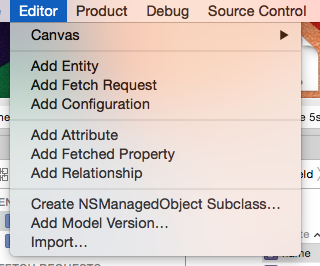
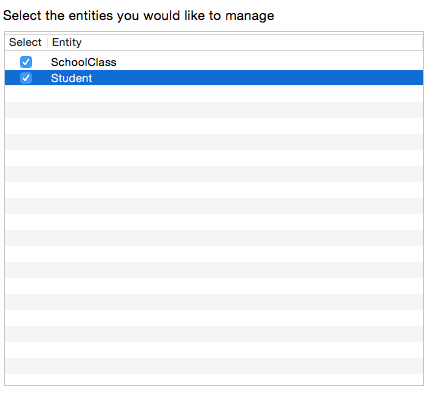
這時候,Xcode會主動為我們創立一個文件,這些文件中有各個類中屬性的聲明。
1、創立一條數據
應用以下代碼停止數據的創立:
//讀取數據模子文件找到在打印出的途徑,會發明外面多了一個sqlite文件,個中有一張表中添加進了一條數據。
NSURL *modelUrl = [[NSBundle mainBundle]URLForResource:@"Model" withExtension:@"momd"];
//創立數據模子
NSManagedObjectModel * mom = [[NSManagedObjectModel alloc]initWithContentsOfURL:modelUrl];
//創立耐久化存儲調和者
NSPersistentStoreCoordinator * psc = [[NSPersistentStoreCoordinator alloc]initWithManagedObjectModel:mom];
//數據庫保留途徑
NSURL * path =[NSURL fileURLWithPath:[[NSSearchPathForDirectoriesInDomains(NSDocumentDirectory, NSUserDomainMask, YES)lastObject] stringByAppendingPathComponent:@"CoreDataExample.SQLite"]];
//為耐久化調和者添加一個數據吸收棧
/*
可以支撐的類型以下:
NSString * const NSSQLiteStoreType;//SQLite
NSString * const NSXmlRss/ target=_blank class=infotextkey>XmlStoreType;//XmlRss/ target=_blank class=infotextkey>Xml
NSString * const NSBinaryStoreType;//二進制
NSString * const NSInMemoryStoreType;//內存
*/
[psc addPersistentStoreWithType:NSSQLiteStoreType configuration:nil URL:path options:nil error:nil];
//創立數據治理高低文
NSManagedObjectContext * moc = [[NSManagedObjectContext alloc]initWithConcurrencyType:NSMainQueueConcurrencyType];
//聯系關系耐久化調和者
[moc setPersistentStoreCoordinator:psc];
//創立數據對象
/*
數據對象的創立是經由過程實體名獲得到的
*/
SchoolClass * modelS = [NSEntityDescription insertNewObjectForEntityForName:@"SchoolClass" inManagedObjectContext:moc];
//對數據停止設置
modelS.name = @"第一班";
modelS.stuNum = @60;
//停止存儲
if ([moc save:nil]) {
NSLog(@"新增勝利");
}
NSLog(@"%@",[[NSSearchPathForDirectoriesInDomains(NSDocumentDirectory, NSUserDomainMask, YES)lastObject] stringByAppendingPathComponent:@"CoreDataExample.sqlite"]);
2、查詢數據
CoreData中經由過程查詢要求來對數據停止查詢操作,查詢要求由NSFetchRequest來停止治理和保護。
NSFetchRequest重要供給兩個方面的查詢辦事:
1.供給規模查詢的相干功效
2.供給查詢成果前往類型與排序的相干功效
NSFetchRequest中經常使用辦法以下:
//創立一個實體的查詢要求 可以懂得為在某個表中停止查詢
+ (instancetype)fetchRequestWithEntityName:(NSString*)entityName;
//查詢前提
@property (nullable, nonatomic, strong) NSPredicate *predicate;
//數據排序
@property (nullable, nonatomic, strong) NSArray<NSSortDescriptor *> *sortDescriptors;
//每次查詢前往的數據條數
@property (nonatomic) NSUInteger fetchLimit;
//設置查詢到數據的前往類型
/*
typedef NS_OPTIONS(NSUInteger, NSFetchRequestResultType) {
NSManagedObjectResultType = 0x00,
NSManagedObjectIDResultType = 0x01,
NSDictionaryResultType NS_ENUM_AVAILABLE(10_6,3_0) = 0x02,
NSCountResultType NS_ENUM_AVAILABLE(10_6,3_0) = 0x04
};
*/
@property (nonatomic) NSFetchRequestResultType resultType;
//設置查詢成果能否包括籽實體
@property (nonatomic) BOOL includesSubentities;
//設置要查詢的屬性值
@property (nullable, nonatomic, copy) NSArray *propertiesToFetch;
在SchoolClass實體中查詢數據,應用以下的代碼:
//創立一條查詢要求
NSFetchRequest * request = [NSFetchRequest fetchRequestWithEntityName:@"SchoolClass"];
//設置前提為 stuNum=60的數據
[request setPredicate:[NSPredicate predicateWithFormat:@"stuNum == 60"]];
//停止查詢操作
NSArray * res = [moc executeFetchRequest:request error:nil];
NSLog(@"%@",[res.firstObject stuNum]);
停止數據初始化
NSFetchedResultsController的初始化須要一個查詢要求和一個數據操作高低文。代碼示例以下:
//遵照協定
@interface ViewController ()<NSFetchedResultsControllerDelegate>
{
//數據橋接對象
NSFetchedResultsController * _fecCon;
}
@end
@implementation ViewController
- (void)viewDidLoad {用於初始化NSFecthedResultsController的數據要求對象必需設置一個排序規矩。在initWithFetchRequest:managedObjectContext:sectionNameKeyPath:cacheName:辦法中,假如設置第三個參數,則會以第三個參數為鍵值停止數據的分區。當數據產生變更時,將經由過程署理停止辦法的回調。
[super viewDidLoad];
//停止初始化操作
NSURL *modelUrl = [[NSBundle mainBundle]URLForResource:@"Model" withExtension:@"momd"];
NSManagedObjectModel * mom = [[NSManagedObjectModel alloc]initWithContentsOfURL:modelUrl];
NSPersistentStoreCoordinator * psc = [[NSPersistentStoreCoordinator alloc]initWithManagedObjectModel:mom];
NSURL * path =[NSURL fileURLWithPath:[[NSSearchPathForDirectoriesInDomains(NSDocumentDirectory, NSUserDomainMask, YES)lastObject] stringByAppendingPathComponent:@"CoreDataExample.sqlite"]];
[psc addPersistentStoreWithType:NSSQLiteStoreType configuration:nil URL:path options:nil error:nil];
NSManagedObjectContext * moc = [[NSManagedObjectContext alloc]initWithConcurrencyType:NSMainQueueConcurrencyType];
[moc setPersistentStoreCoordinator:psc];
NSFetchRequest * request = [NSFetchRequest fetchRequestWithEntityName:@"SchoolClass"];
//設置數據排序
[request setSortDescriptors:@[[NSSortDescriptor sortDescriptorWithKey:@"stuNum" ascending:YES]]];
//停止數據橋接對象的初始化
_fecCon = [[NSFetchedResultsController alloc]initWithFetchRequest:request managedObjectContext:moc sectionNameKeyPath:nil cacheName:nil];
//設置署理
_fecCon.delegate=self;
//停止數據查詢
[_fecCon performFetch:nil];
}
@end
3、與UITableView停止數據綁定
-(UITableViewCell *)tableView:(UITableView *)tableView cellForRowAtIndexPath:(NSIndexPath *)indexPath{後果以下:
UITableViewCell * cell = [tableView dequeueReusableCellWithIdentifier:@"cellid"];
if (!cell) {
cell = [[UITableViewCell alloc]initWithStyle:UITableViewCellStyleSubtitle reuseIdentifier:@"cellid"];
}
//獲得響應數據模子
SchoolClass * obj = [_fecCon objectAtIndexPath:indexPath];
cell.textLabel.text = obj.name;
cell.detailTextLabel.text = [NSString stringWithFormat:@"有%@人",obj.stuNum];
return cell;
}
-(NSInteger)numberOfSectionsInTableView:(UITableView *)tableView{
return [_fecCon sections].count;
}
-(NSInteger)tableView:(UITableView *)tableView numberOfRowsInSection:(NSInteger)section{
id<NSFetchedResultsSectionInfo> info = [_fecCon sections][section];
return [info numberOfObjects];
}
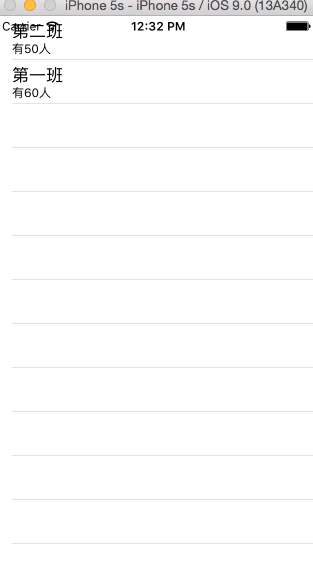
4、將數據變更映照到視圖
//數據將要轉變時挪用的辦法
- (void)controllerWillChangeContent:(NSFetchedResultsController *)controller
{
//開啟tableView更新預處置
[[self tableView] beginUpdates];
}
//分區數據轉變時挪用的辦法
- (void)controller:(NSFetchedResultsController *)controller didChangeSection:(id <NSFetchedResultsSectionInfo>)sectionInfo atIndex:(NSUInteger)sectionIndex forChangeType:(NSFetchedResultsChangeType)type
{
//斷定行動類型
switch(type) {
//拔出新分區
case NSFetchedResultsChangeInsert:
[[self tableView] insertSections:[NSIndexSet indexSetWithIndex:sectionIndex] withRowAnimation:UITableViewRowAnimationFade];
break;
//刪除分區
case NSFetchedResultsChangeDelete:
[[self tableView] deleteSections:[NSIndexSet indexSetWithIndex:sectionIndex] withRowAnimation:UITableViewRowAnimationFade];
break;
//挪動分區
case NSFetchedResultsChangeMove:
//更新分區
case NSFetchedResultsChangeUpdate:
break;
}
}
//數據轉變時回調的署理
- (void)controller:(NSFetchedResultsController *)controller didChangeObject:(id)anObject atIndexPath:(NSIndexPath *)indexPath forChangeType:(NSFetchedResultsChangeType)type neWindexPath:(NSIndexPath *)neWindexPath
{
switch(type) {
//拔出數據
case NSFetchedResultsChangeInsert:
[[self tableView] insertRowsAtIndexPaths:@[neWindexPath] withRowAnimation:UITableViewRowAnimationFade];
break;
//刪除數據
case NSFetchedResultsChangeDelete:
[[self tableView] deleteRowsAtIndexPaths:@[indexPath] withRowAnimation:UITableViewRowAnimationFade];
break;
//更新數據
case NSFetchedResultsChangeUpdate:
[self reloadData];
break;
//挪動數據
case NSFetchedResultsChangeMove:
[[self tableView] deleteRowsAtIndexPaths:@[indexPath] withRowAnimation:UITableViewRowAnimationFade];
[[self tableView] insertRowsAtIndexPaths:@[newIndexPath] withRowAnimation:UITableViewRowAnimationFade];
break;
}
}
//數據更新停止挪用的署理
- (void)controllerDidChangeContent:(NSFetchedResultsController *)controller
{
[[self tableView] endUpdates];
}
【iOS App中數據治理框架Core Data的根本數據操作教程】的相關資料介紹到這裡,希望對您有所幫助! 提示:不會對讀者因本文所帶來的任何損失負責。如果您支持就請把本站添加至收藏夾哦!
- iOS的UI開辟中Modal的應用與主流運用UI構造引見
- iOS學習筆記25—NSDate的常用用法(一)
- IOS後台運行機制 與 動作
- iOS App開發中UIViewController類的使用教程
- iOS10 適配 ATS(app支持https通過App Store審核) 韓俊強的博客
- iOS學習之WebView的使用
- iOS開發從入門到精通-- 警告對話框UIAlertView和等待提示器UIActivityIndicatorView
- Objective-C的MKNetworkKit開辟框架解析
- iOS開發——GCD的使用與多線程開發淺析
- [iOS]代碼進行設備屏幕判斷的最佳實踐方案討論

